person seeing the mirage of the blossom : everything that incomes will also pass. - bu da gelir, bu da geçer.
Don't wanna be here? Send us removal request.
Photo

Miss International Uzbekistan 2022 National Costume
The name of the costume “Parange” (Translated from Arabic “Upper Clothing”, from Persian “Dress”) It was worn for weddings and very important celebrations. Depending on the color, length, embroidered patterns and ornaments, one could determine the status of a girl (married/unmarried, her age and financial status of the family). She fully embodies the culture, traditions, art and history of the Uzbek people. Unveiling the cape, you can see a chic robe with thousands of rooms and the silhouette of the bird “Humo” which symbolizes happiness and luck. Also reveals all the beauty of handmade “Tillakosh” and “Zebigardon” jewelry More than 30 people worked on the suit for 1.5 years.
172 notes
·
View notes
Photo









Miss International Uzbekistan 2022 National Costume
The name of the costume “Parange” (Translated from Arabic “Upper Clothing”, from Persian “Dress”) It was worn for weddings and very important celebrations. Depending on the color, length, embroidered patterns and ornaments, one could determine the status of a girl (married/unmarried, her age and financial status of the family). She fully embodies the culture, traditions, art and history of the Uzbek people. Unveiling the cape, you can see a chic robe with thousands of rooms and the silhouette of the bird “Humo” which symbolizes happiness and luck. Also reveals all the beauty of handmade “Tillakosh” and “Zebigardon” jewelry More than 30 people worked on the suit for 1.5 years.
458 notes
·
View notes
Photo


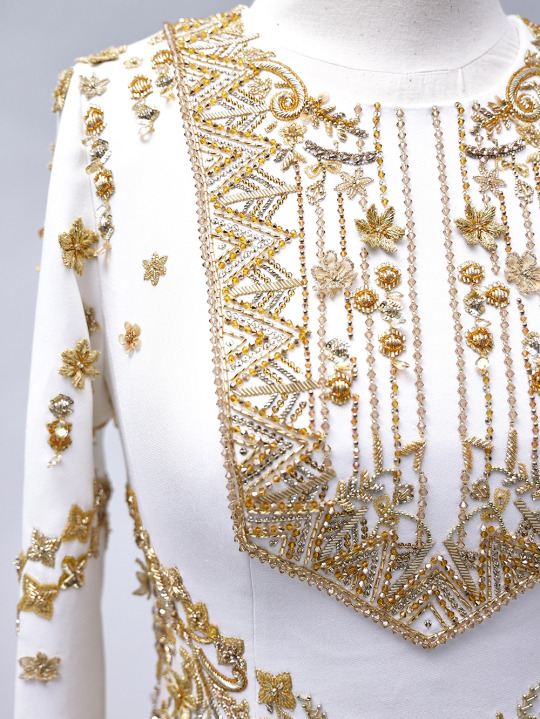
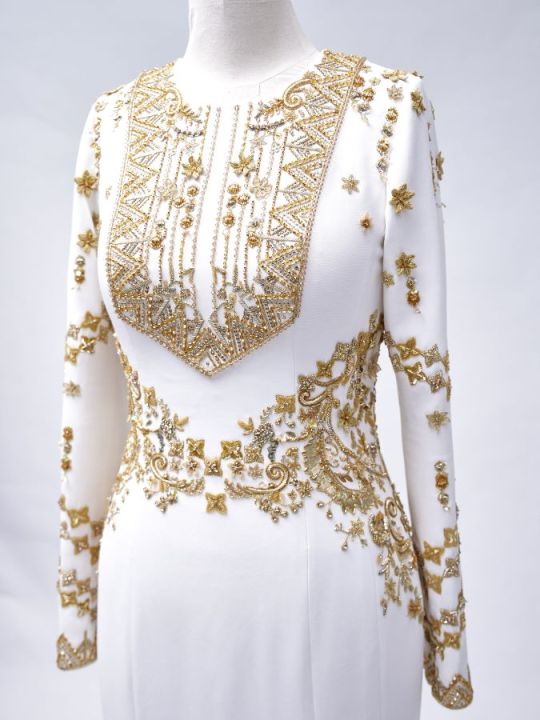


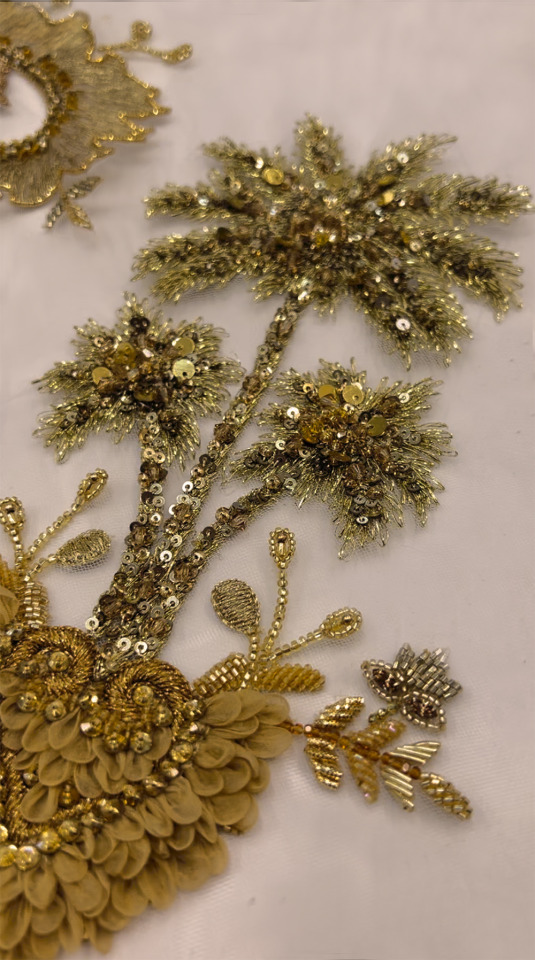


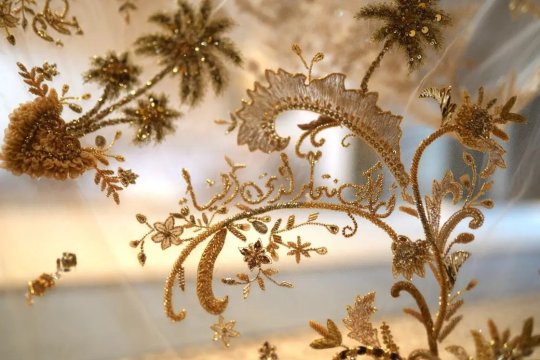
Close-up of Rajwa Al Saif’s henna party outfit on 22 May 2023. The dress, by Saudi designer Honayda Serafi, took more than 2,000 hours to create, and includes several hidden messages of love, Vogue Arabia reports.
“Crafted by Saudi designer Honayda Serafi, Al-Saif’s henna dress is a vision in white and gold. The future queen of Jordan celebrated with family and friends in a look that takes inspiration from the traditional Najdi dress, known as Sahabi thoub, which originates from the Najd region of the Kingdom of Saudi Arabia. Keeping in mind the occasion and the family, Serafi made sure to combine the cultural beauty of the Hashemite kingdom of Jordan and the Kingdom of Saudi Arabia to celebrate the union of Rajwa and Prince Hussein beautifully.
Featuring a handcrafted veil and dress, Rajwa Al-Saif’s pristine white henna outfit comes doused in 3D ornaments, made using a mix of silk, metallic threads and traditional reed strings (a signature element of Najdi embroidery). To create this masterpiece, Honayda Serafi took cues from the bride’s personality, attempting to reflect her innate grace, the rich traditions of her land, and her contemporary spirit.
Look closely, and you’ll notice that Al-Saif’s gown is replete with lovingly made details. Featuring a high round neck and full sleeves, the crepe gown features an inverted triangle-shaped bodice that is inspired by the traditional Najdi bodice design, normally worn as a separate piece. As the body-skimming gown continues, it flares out towards the ankles to create a mermaid-esque shape. The bodice of the gown is elevated using embroidery: soft organza flowers share space with geometric shapes and Arabic motifs, all of which are typical to Saudi Arabia and reflect the beauty and traditions of the bride’s homeland.
Rajwa Al-Saif’s veil has also been embroidered with meaningful designs, making this piece so personal to her journey. Seven Jordanian stars adorn her veil to signify the seven-pointed star that sits proudly on the Jordanian flag. What makes this symbol even more special is its religious meaning: The star on the Jordan flag signifies the seven verses in the opening chapter of the Holy Qur’an, and the seven mountains of Amman.
Along with the stars, the veil also features intricate palm trees as a reference to Saudi Arabia, and even some poetry. The words “I see you, and life becomes more beautiful” have been embroidered into Al-Saif’s veil, from Tunisian poet Abu al-Qasim al-Shabi, known for his Andalusian notes. If you’re a fan of Rajwa Al-Saif’s elegant wardrobe, you may already know that the bride-to-be has a soft spot for special symbols when it comes to her clothing. Back in August 2022, when Rajwa was officially engaged to Prince Hussein, she also commemorated the occasion with her clothing—an abaya that was embroidered with two gold birds, symbolizing two souls in love.”
The veil took 760 hours to complete
An exquisite piece of couture requires hours of effort, and Rajwa Al-Saif’s henna outfit is no different. According to the designer, Al-Saif’s veil took 760 hours to complete, and was worked on by a team of experts, craftsman and women. Extending to 10 meters, the piece was made using handcrafted tulle, a process that normally takes close to 2,000 hours of work. As for her billowing gown, the creation is the result of 340 hours of work.
Honayda Serafi: “I am very proud and honored to be part of this historic union”
Speaking on the occasion, Serafi shared, “I am very proud and honored to be part of this historic union between His Royal Highness, Crown Prince Al Hussein bin Abdullah II of the honorable Hashemite family, and Miss Rajwa Khalid Alseif. May they be blessed with happiness and their union be crowned with success.” (x)
805 notes
·
View notes
Text
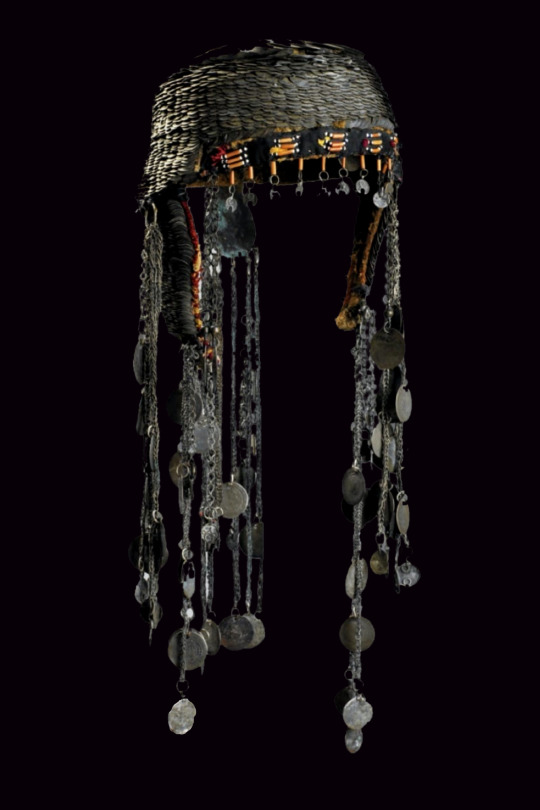

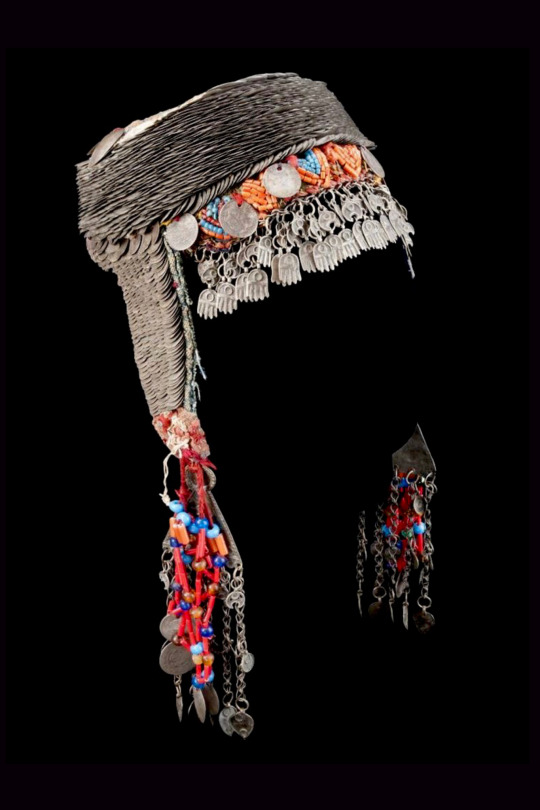

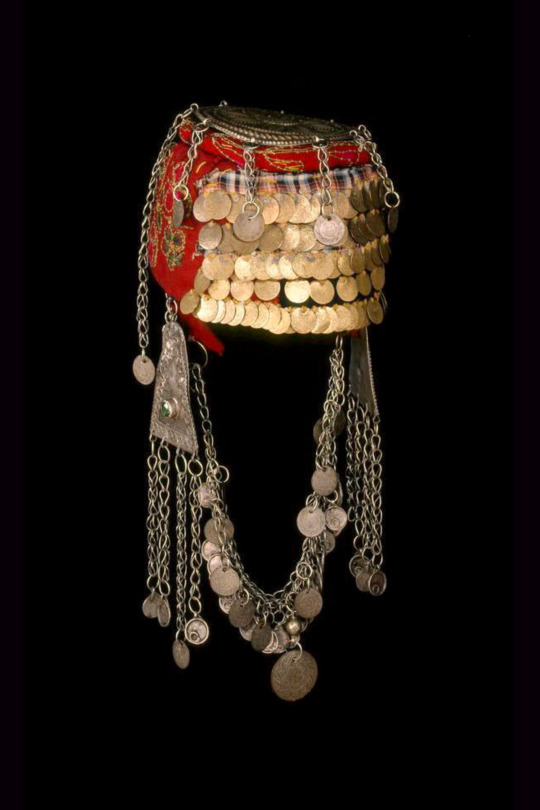

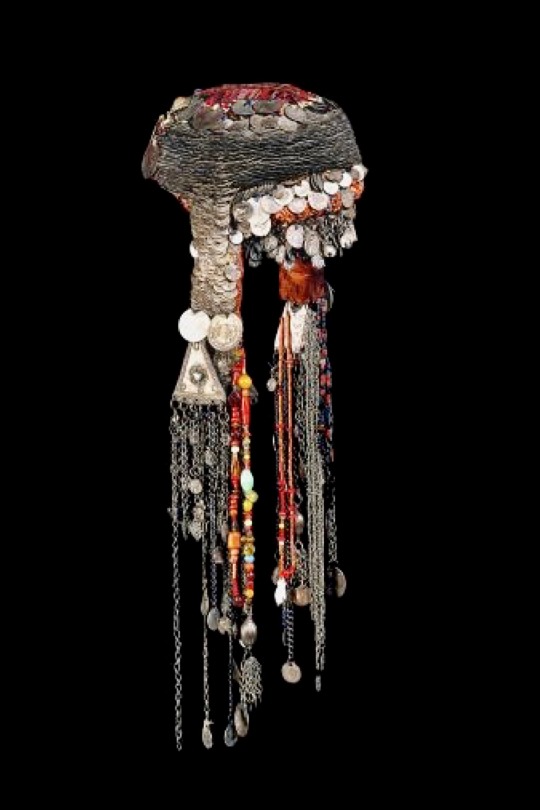
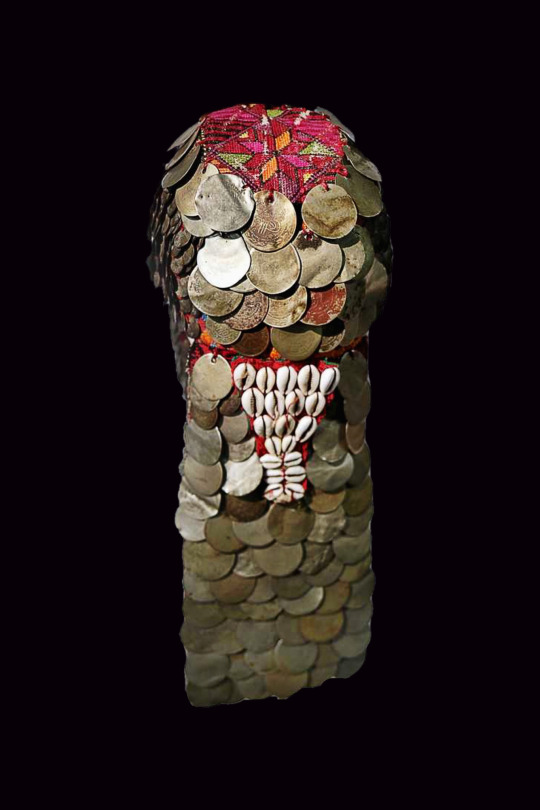
Palestinian Headdresses - (shatweh/wuqayat al-darahim)
“With numerous beads, ottoman coins, charms and pendants, the headdress shielded a bride from the ‘eye of envy’ when she was most vulnerable”
5K notes
·
View notes
Photo





Traditional dresses from the Dodecanese islands of Greece. Photos by Calliope Voutzali for an exhibition in the Library of the Hellenic Parliament.
327 notes
·
View notes
Photo

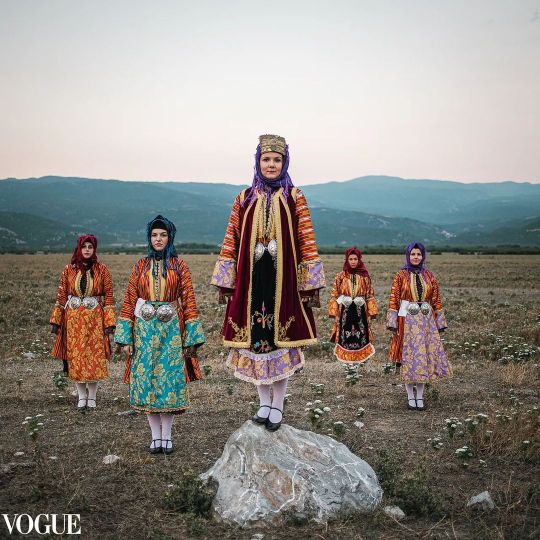
Photos from Michael Pappas’s “Mitos: The Thread of Greece” project for Vogue.
Sifnos, Cyclades islands
Stefanovíkio, Magnesia, Thessaly
500 notes
·
View notes
Text

Young Albanian girl wearing a traditional dress in Tirana, circa 1938.
649 notes
·
View notes
Photo

Greek embroidered scarf from Nigde of Cappadocia (Turkey).
Photo: Studio Kominis
Source: lykeionellinidon
1K notes
·
View notes
Text

girls in belarusian folk clothing!
girls in belarusian folk clothing who are into each other!
although i took some liberty with the design and this is more of an approximation, the girl on the left wears clothing from Puchavičy, Belarus. her headdress is called namitka/wimple.
and the other girl's dress is from Kalinkavičy, southern Belarus
360 notes
·
View notes
Photo
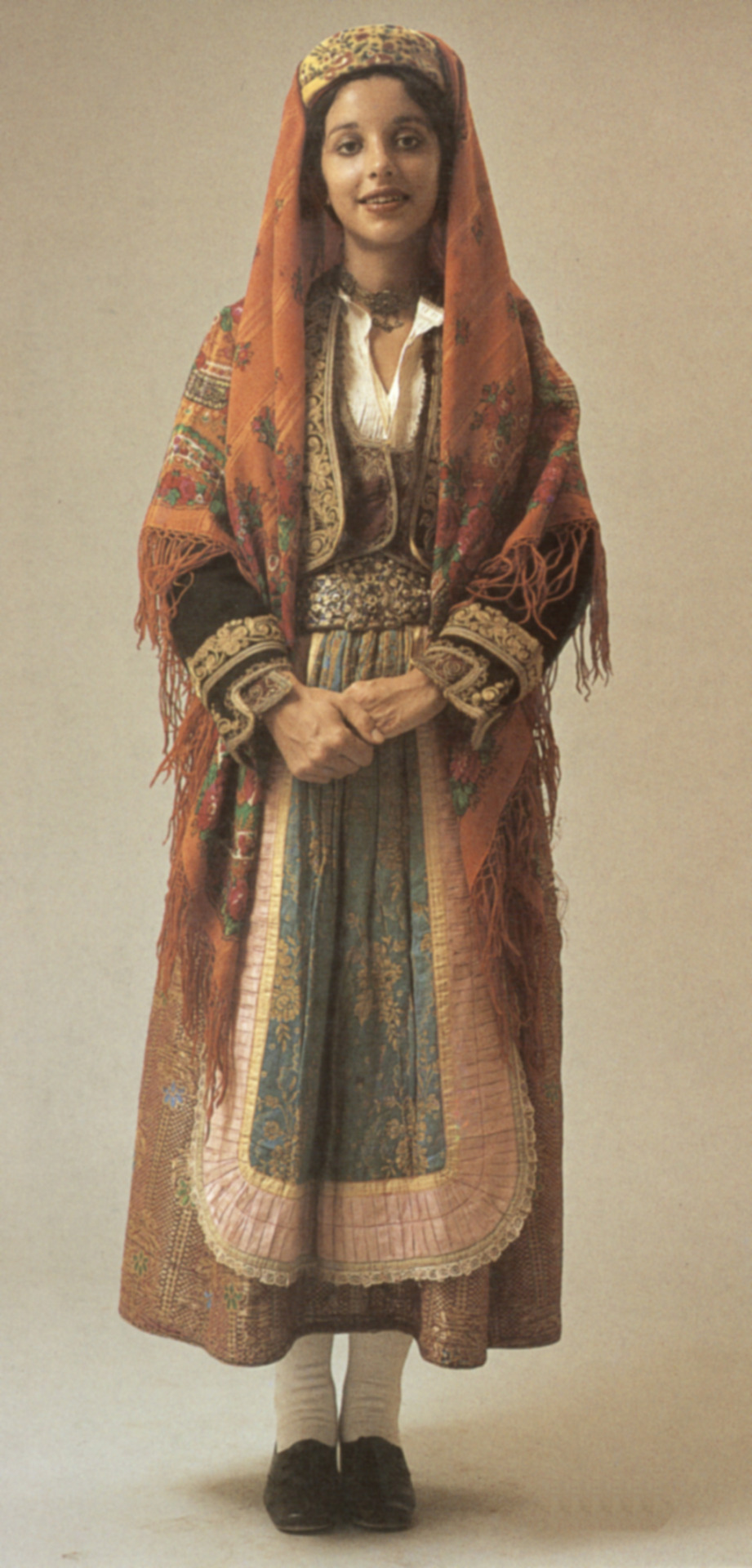
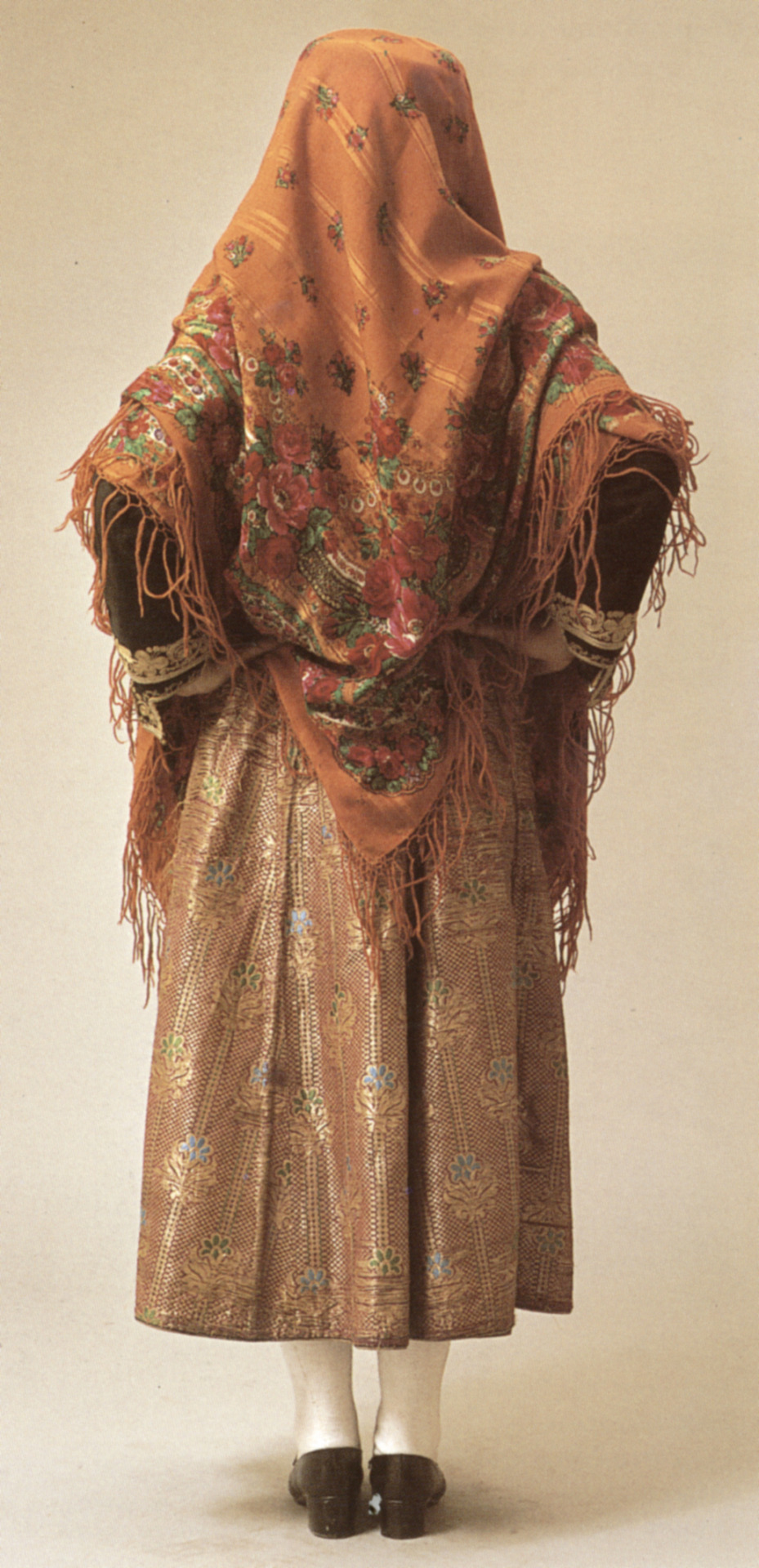
Festive costume from Thasos island, Macedonia, Greece, c.1900.
Source: www.texmedindigitalibrary.eu
3K notes
·
View notes
Text
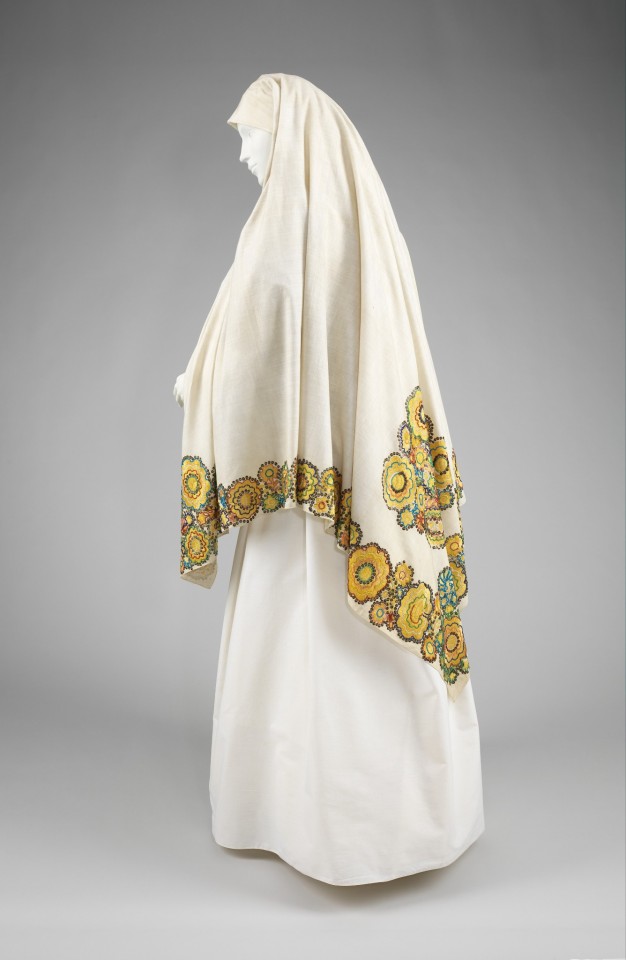

• Wedding veil.
Date: late 19th century
Culture: Czech
Medium: Linen, silk, metal, glass.
1K notes
·
View notes
Text
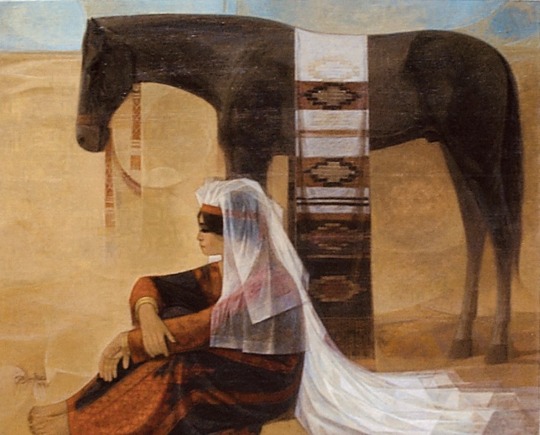
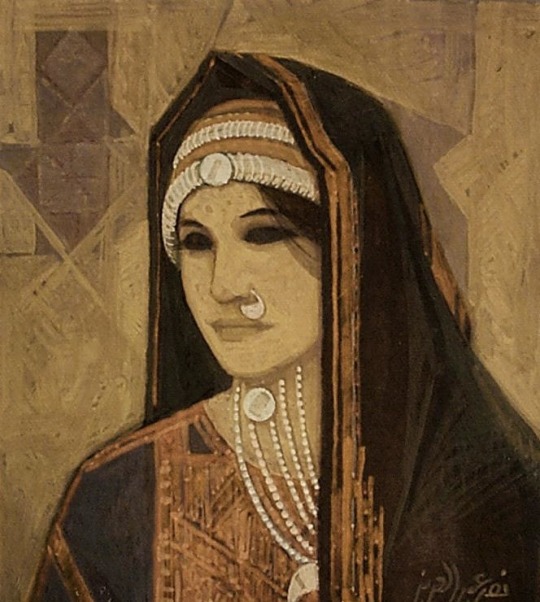


Nasr Abel Aziz Eleyan (1941) - Palestinian figurative painter whose individual style is concerned with cultural Palestinian traditions. His paintings depict the rural life of Palestinian farmers and the traditional Palestinian way of life.
6K notes
·
View notes
Photo
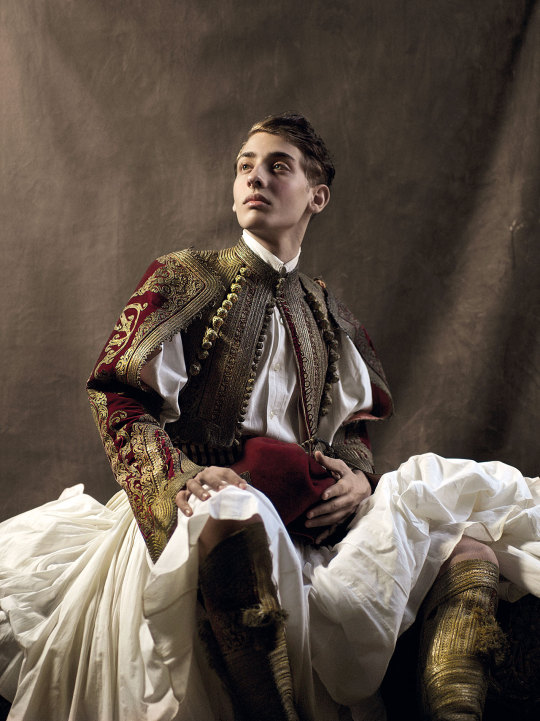



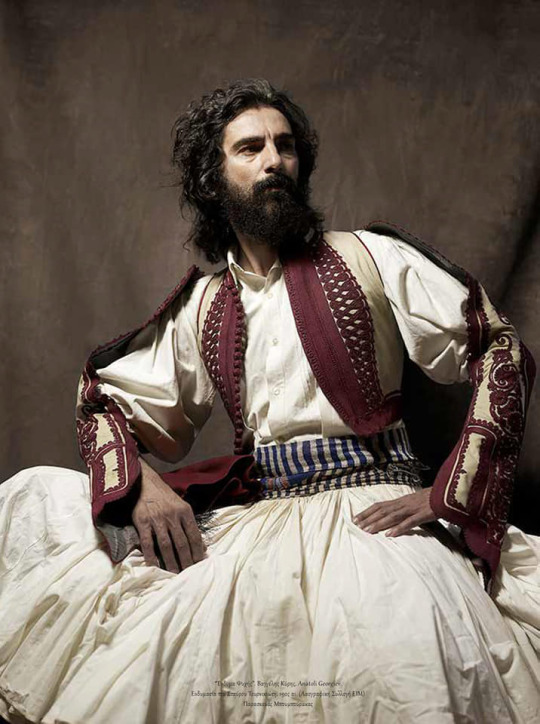

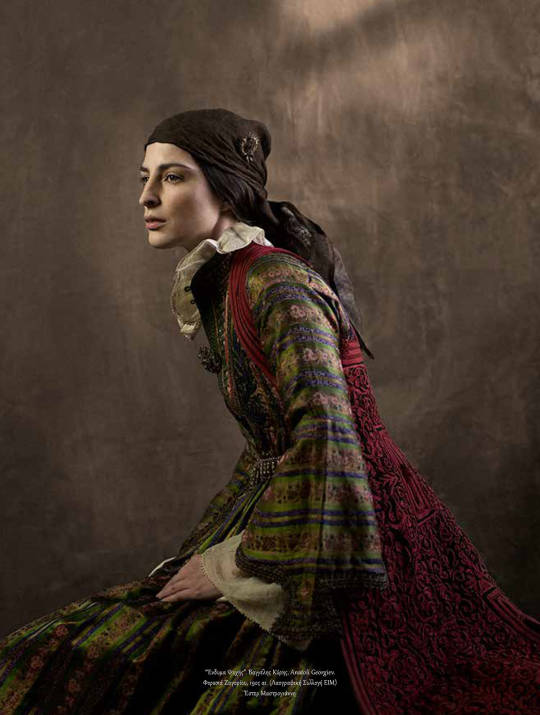
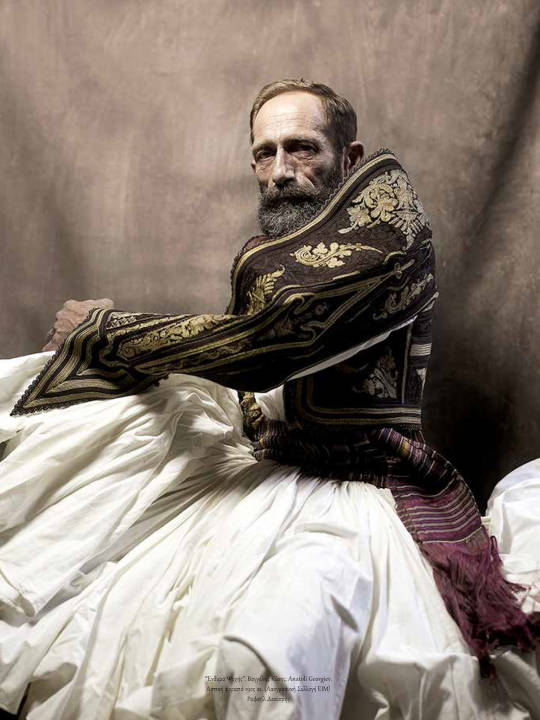
Newly exhibited photos from the project Ένδυμα Ψυχής - Raiment of the Soul, collaboration of photographer Vangelis Kyris and Bulgarian embroidery artist Anatoli Georgiev who present Greek traditional costumes, which are exhibits of the National Historical Museum of Greece. The exhibition is currently hosted in the Acropolis Museum, until March.
Attire of King Otto of Greece, 19th century.
Dress from Nisyros island, 19th century.
Dress from Zakynthos (Zante) island, 18th century.
Attire of Dimitris Mavromichalis, aide-de-camp of King Otto.
Attire of Stavros Tournikiotis, 19th century.
Urban dress of Old Athens, 18th century.
Dress from Zagori, 19th century.
Urban attire, 19th century.
See more photos of the project x, x, x and x.
10K notes
·
View notes



